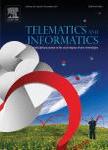版权所有:内蒙古大学图书馆 技术提供:维普资讯• 智图
内蒙古自治区呼和浩特市赛罕区大学西街235号 邮编: 010021

作者机构:High performance Computing Branch Space Data and Computing Division NASA Goddard Space Flight Center Greenbelt MD 20771 United States Symbolic Technologies Inc. Riverdale MD 20737 and Laboratory for Atmospheres NASA Goddard Space Flight Center Greenbelt MD 20771 USA University of Woming Department of Physics and Astronomy Laramie WY Riverdale MD 20737 United States Goddard Distributed Active Archive Facility NASA Goddard Space Flight Center Greenbelt MD 20771 United States Mantech Inc. Laboratory for Hydrospheric Processes NASA Goddard Space Flight Center Greenbelt MD 20771 United States
出 版 物:《Telematics and Informatics》 (Telematics Inf)
年 卷 期:1994年第11卷第4期
页 面:295-308页
学科分类:0810[工学-信息与通信工程] 0808[工学-电气工程] 0809[工学-电子科学与技术(可授工学、理学学位)] 0839[工学-网络空间安全] 08[工学] 0812[工学-计算机科学与技术(可授工学、理学学位)]
摘 要:Most signals reaching the mammalian brain are noisy, weak, and degraded so that the corresponding data that are carried by the signals are themselves incomplete and overlapping, and, more likely that not, the product of convolution with nonlinear sources. The attempt to deconvolve these signals so as extracts the maximum meaningful information and make the best possible decisions usually leads to problems that are mathematically known as ill-possible and ill-conditioned. That is, there may exist insufficient information from which to draw unique conclusions, and simultaneously, small uncertainties within the datasets may lead to mutual inconsistencies within the competing hypotheses. How the brain processes signals and attemts to learn from them is a mystery. Under the best of circumstances, the brain can usually perform well when solving problems involving deductive inferencing. However, when attempting to form decisions from incomplete or ambigous pieces of information, if often falls prey to what is referred to as cognitive illusions. This article illustrates the potential for powerful artificial intelligence (AI) techniques when used in the analysis not only of the formidable problems that now exist in the NASA earth science programs, but also those to be encountered in the future Mission to Planet Earth (MTPE) and Earth Observing System (EOS) programs. These techniques, based on the logical and probabilistic reasoning aspects of plausible inference, stongly emphasize the synergetic relation between data and information. In particular, we address a complex, nonlinear system of under-determined and ill-conditioned equations that arise from the conditions of insufficient and overlapping data. The specific problem involves the estimation of the earth s vertical atmospheric ozone profile over 92 layers from 12 solar backscattered ultraviolet (SBUV) radiation data values. To accomplish this, we employ a given atmospheric radiative transfer function to transform a k